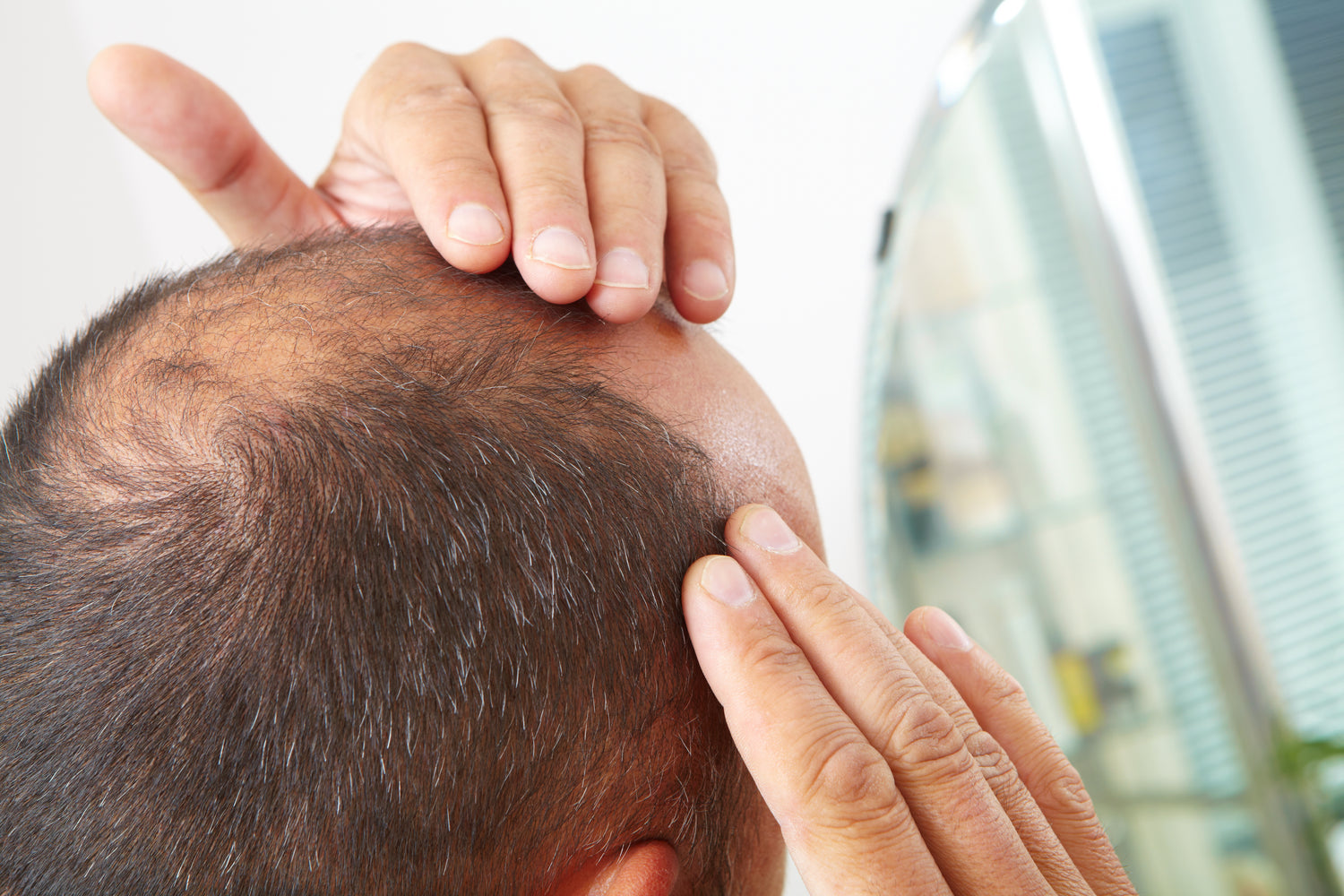What is androgenetic alopecia (AGA)?
Also known as Male Pattern Baldness, it is a condition that affects 50% of men by the age of 50. AGA is caused by a combination of genetics and hormones that leads to a typical pattern of hair loss across the scalp.

Why does it happen?
Genetics play a large role in developing AGA. People who are susceptible have increased levels of the male hormone dihydrotestosterone (DHT) in their scalp. This causes changes in their hair cycle. Eventually, these changes cause the hair follicles to become smaller (called 'miniaturisation'), producing less hairs overall and making the hairs they do produce shorter and thinner. Stress, smoking, and diet can also play a role in increasing the rate of hair loss.

How does it happen?
Male pattern hair loss typically results in hair thinning at the temples and the top of the scalp where a bald spot can start to develop. Without treatment, the hairline will continue to recede and the hair on the top of the head will become thin and sparse.
Hair loss will happen differently for everyone. For some people it will be very gradual over many decades, while others can notice it over the space of a couple of years.

Other causes of hair loss
There are many other causes of hair-loss, which typically don’t present with the same gradual, patterned hair-loss of AGA. These include telogen effluvium (a condition caused by stressful experiences), psoriasis or fungal infections of the scalp, autoimmune diseases affecting hair follicles, nutrient deficiencies, and certain medications, among others. These conditions won’t typically respond to the medications used to treat AGA and your doctor will screen for these in your first consultation.
